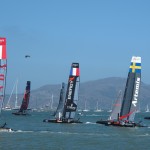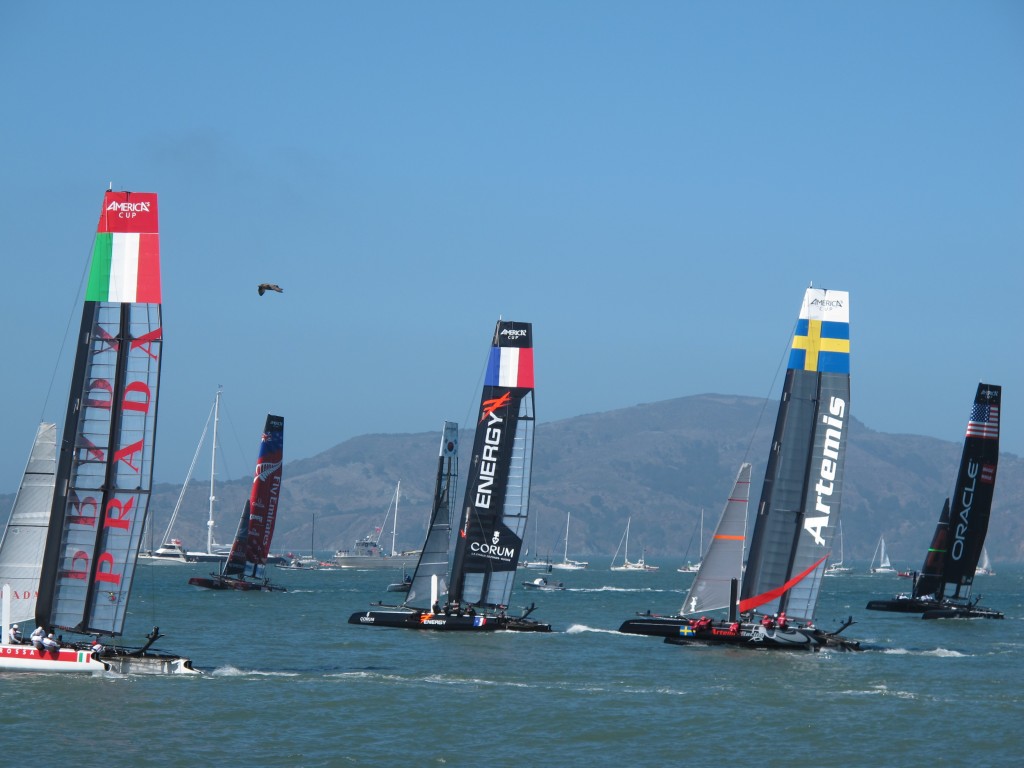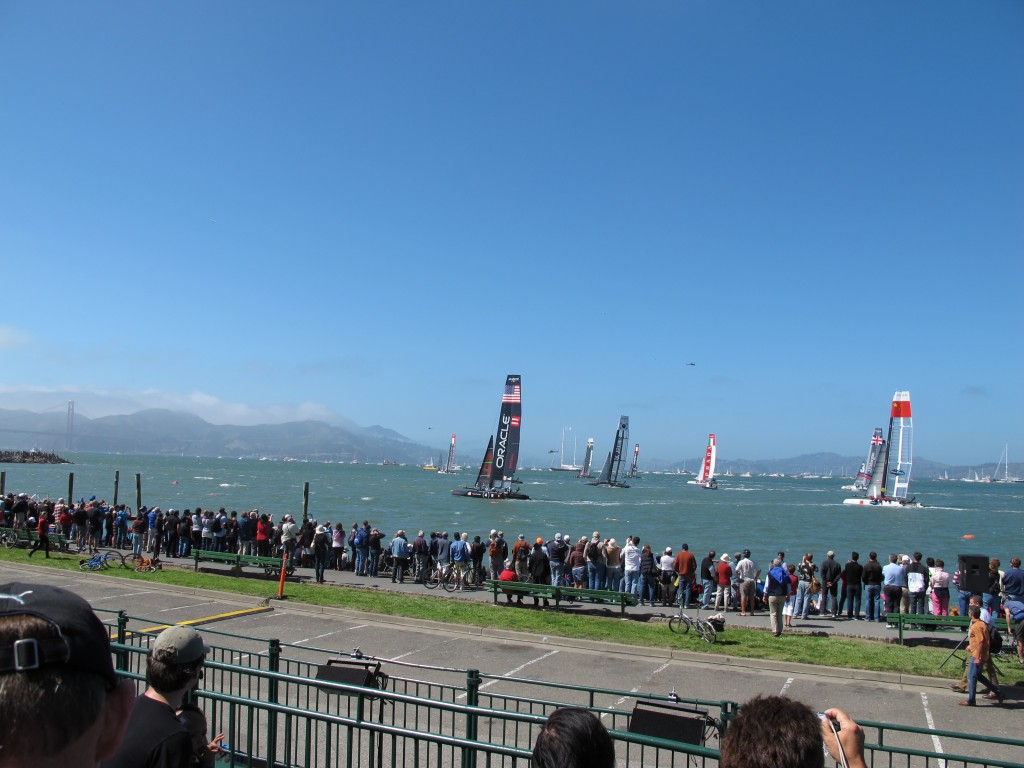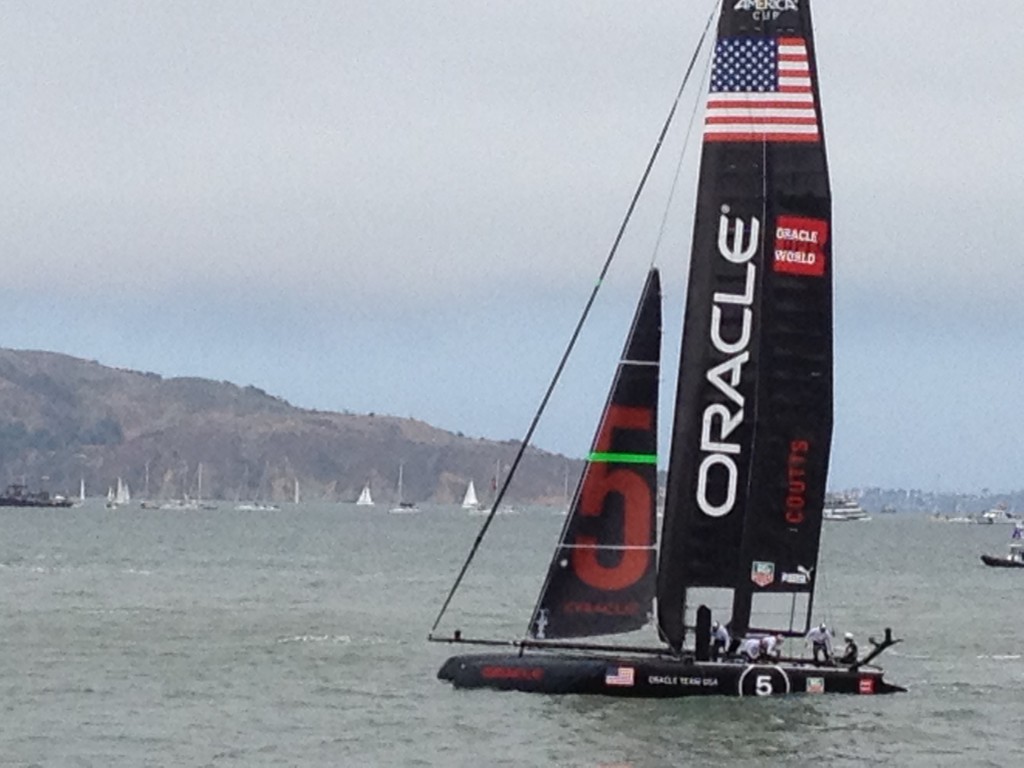The great thing about living in San Francisco is sometimes the world comes to you.
So it was last week when the America’s Cup World Series came to town. I like sailing, and I was curious to see the world’s best sailors challenging themselves in San Francisco Bay, so last Friday I wandered down to Marina Green for a closer look. I was glad I did. It was really crowded (in San Francisco, on a Friday, everyone leaves the office around lunch time) but not annoyingly so.
“Would you like a free ticket to sit in the stands?” a woman asked me. She had a fist of tickets in her hands.
“Sure,” I said. She gave me a ticket and a wristband and showed me where I could go. I thanked her and then wandered around some more. Some people were watching the action on a big screen television, others were buying up stuff in the official America’s Cup store. (Sailors have really cool raincoats!) Others were buying strange food you would only eat at some sort of “festive” event. Fried turkey legs, churros, garlic fries, kettle corn, barbecue sandwiches, and nachos.
Sailing is not a cheap sport to enjoy. Unlike, say, soccer, which requires only a round spotted ball, sailing requires an entire boat, along with access to water; then there’s maintenance costs and a place to store your boat and sailing gear and lessons–and it all adds up in a hurry. So it should be no surprise that there would be an entire pavilion devoted to champagne and fancy chocolates, and another devoted to wine. Most of the boats were sponsored by bankers or by expensive watches. Like NASCAR, many of the boats sported several different sponsors. Red Bull was one, along with Puma.
Which is all fine. But I had a hard time finding a souvenir to buy. I wasn’t in the mood to spend $350 dollars, for example, on a raincoat bearing the name J.P. Morgan. That’s the kind of thing that can get the crap kicked out of you. I ended up with a very practical baseball cap. I say practical, because, for some reason the sun was out, a rare event, and it was trying to bore a hole through my skull. It was very handsome, as baseball caps go. In fact, all of the stuff is pretty top shelf, design-wise. But that’s what happens when you have sponsors such as Prada. Many of the sailors, when they got off their boats, and were paraded in front of the media, resembled models on a runway, festooned with expensive accessories and fancy rain gear and cool deck shoes.
The names of this ships don’t mean anything. Korea, for example, has no Koreans in it. It seems almost all of the sailors are South African, New Zealish (sic) or Australian. Even the U.S. team isn’t from here. They might live here (to train) but there seems to be no rules that you have to be from the country you represent. One exception was the French boat. They all did a very convincing job of sounding French in their interviews.
It can be boring. The Match Races, as they were called, consisted of two boats racing off into the distance, disappearing from view momentarily, and then coming back twenty minutes later, one of them ahead of the other, and then it was over. The announcers went into overdrive though, making up for all the excitement that I was apparently missing.
It’s all about the Fleet Races. That’s when all of the boats race each other. And that’s when the mayhem happens. And people lose their minds. Even if you have no idea what is going on, it’s still exciting. The ships do tack in close to shore, and the finish line is right in front of the stands. Even without binoculars you can take in the action.
People in the stands get way into sailing. And they all -with the exception of some unfortunate young Marina types, there to get drunk and crack jokes – look like sailors: deep tans, cool sunglasses and watches, perfectly coiffed salt and pepper hair, cool raincoats and windbreakers, and huge enormous cameras with zoom lenses.
This is just the warm up. The real even takes place next year, when, from June to September, the world’s best sailors will go head to head.





